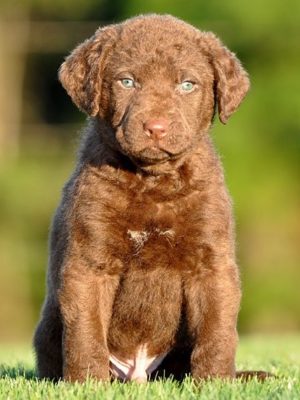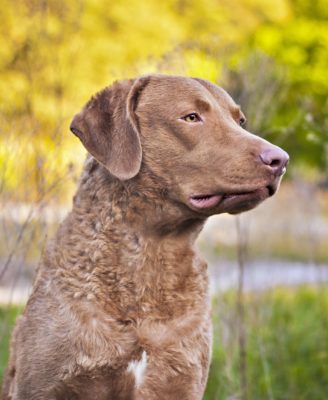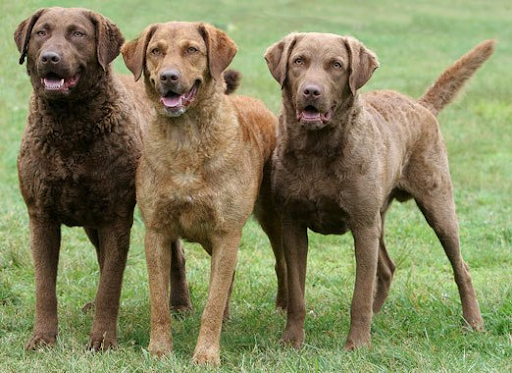Chesapeake Bay Retriever
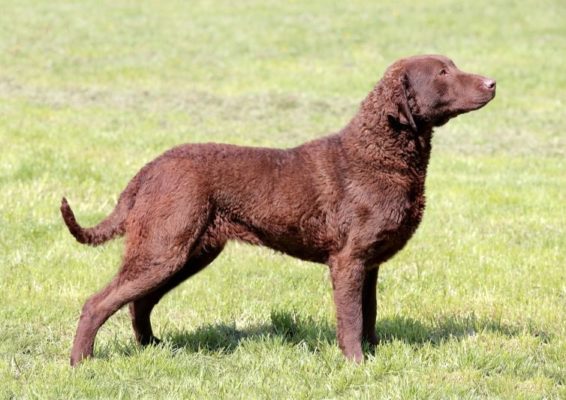
The Chesapeake Bay Retriever is an independent, intelligent dog with a good disposition. Representatives of the breed are very affectionate and devoted to the owner and his family. Excellent with both young and older children. Towards strangers are unfriendly. Therefore, you can use the courageous pet as a guardian.
Table of Contents
Breed Information
| Another Name | Chesapeake |
| Origin | USA |
| Height | Males 58-66 cm Females 53-61 cm |
| Weight | 25-36 kg |
| Fur | Short |
| Color | Chestnut |
| Lifespan | 10-12 years |
| FCI Classification | Retrievers – Flushing Dogs – Water Dogs |
| Group | Hunting dogs, dogs for children |
| Price | $700-900 |
Breed Photos
Origin History
The Chesapeake Bay Retriever was bred in the United States in the 19th century. The breed was named after the Chesapeake Bay. In 1807 an English ship ran aground at this place with two Newfoundlands on board, which were rescued along with the crew. There is a theory that from these dogs came the breed, which was named the Chesapeake Bay. It was first recognized in 1877 in Baltimore. Seven years later, the American Kennel Club was founded, and the first breed standard was adopted.
The Chesapeake first went to a show in 1902 in Boston. And 15 years later, a club of breed lovers was formed. The International Retriever Standard was not adopted until 1948.
Appearance
The Chesapeake Bay Retriever is a well-proportioned, medium-sized dog with a strong body. The back is short and muscular. The pet’s chest is deep and voluminous. The neck is strong and short. The head is large, round, with a wide forehead. The ears are floppy, medium length. The eyes are small, widely spaced, amber in color. The limbs are muscular and strong. The tail is long and thick. The coat is short, wavy, and thick. Color chestnut.
Character
The Chesapeake Bay Retriever is an independent, intelligent dog with a good disposition. Representatives of the breed are very affectionate and devoted to the owner and his family. Excellent with both young and older children. Towards strangers are unfriendly. Therefore, you can use the courageous pet as a guardian. The Chesapeake Bay Retriever is a strong and independent dog with leadership qualities. It will always dominate other pets. For this reason, the dog will not be suitable for an owner with a mild temperament.
Care
It is best to keep a retriever in his own home with a yard. The freedom-loving dog will feel comfortable there. The Chesapeake Bay Retriever tolerates the cold well but is poorly susceptible to heat. It can live in an aviary but not on a chain. If you want the dog to live in an apartment, be prepared for regular walks. An active pet will need at least two hours of walks each day to discharge its stored energy.
The hair of a Chesapeake is short, but it is advisable to comb it every day. But it is worth bathing the pet rarely, only if necessary. Due to the protective oil layer on top of the coat, it protects it from water and dirt. You should also keep an eye on your dog’s floppy ears and regularly clean them of wax and dirt.
Training
Chesapeakes are generally easy to train. They are obedient but independent dogs that require a firm hand. The pet must see the owner as an authority and leader; then, he will obey only him. The main thing is the early socialization of the puppy. Dogs of this breed are intelligent, but at the same time, slightly slow. Raising your voice and using force towards the pet is unnecessary. It is a very docile retriever that only needs a glance. It is better to encourage the four-legged dog with praise and goodies.
The Chesapeake Bay Retriever has a high need for training. If you don’t have time or don’t know how to train, leave it to professionals. Training should include a lot of physical activity, be varied and not boring.
Common Diseases
In general, Chesapeake Bay Retrievers are healthy dogs. Unfortunately, the breed is prone to these genetic diseases:
- hip dysplasia;
- progressive retinal atrophy;
- intestinal congestion;
- epilepsy;
- poor blood clotting.
Take your pet to the veterinarian every year for a checkup and necessary vaccinations. Also, remember to keep your dog’s floppy ears healthy to avoid infectious diseases.
Nutrition
There are two food options for the Chesapeake Bay Retriever. They are prepared to dry food and natural food. The first has a balanced healthy composition, and you do not have to spend time cooking. In other cases, you should pay attention to the pet’s diet. Its basis should consist of lean meat and by-products. Also, fish, dairy products, and cereals will not be superfluous. Do not forget about fruits, vegetables, greens, which will enrich the pet’s body with the necessary vitamins and minerals.
It is categorically not recommended to overfeed the Chesapeake, which is prone to obesity. Sweet, salty, smoked, spicy, fatty foods should be excluded from the pet’s diet altogether.
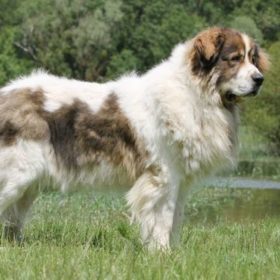 Pyrenean Mastiff
Pyrenean Mastiff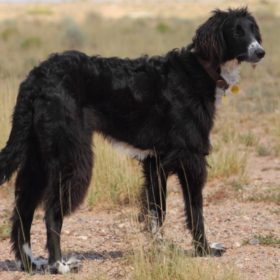 Taigan
Taigan Saint Miguel Cattle Dog
Saint Miguel Cattle Dog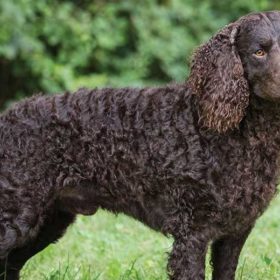 American Water Spaniel
American Water Spaniel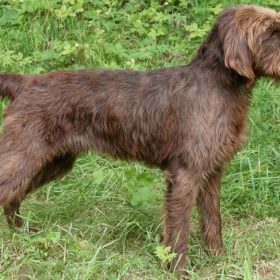 Pudelpointer
Pudelpointer Soft-coated Wheaten Terrier
Soft-coated Wheaten Terrier